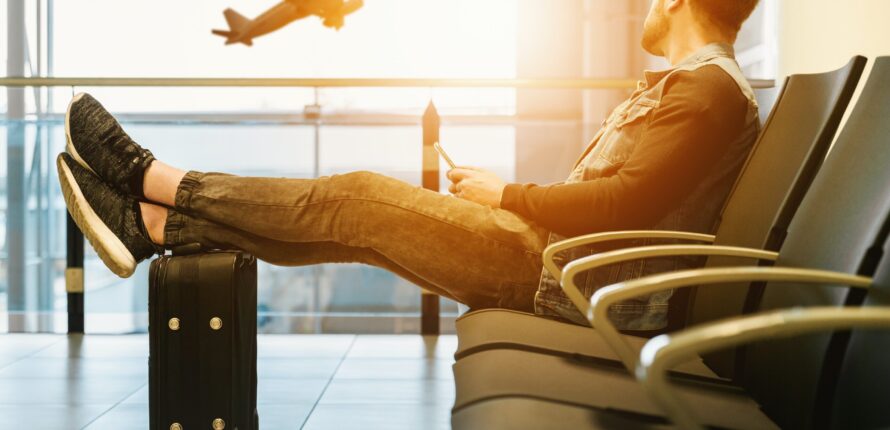Heading South for Spring Break? Airports are bustling with activity, and for many travelers, it’s an opportunity to get some work done, check emails, or catch up on social media.
Public WiFi is notorious for being insecure, making it easy for hackers to intercept your online activity and steal your personal information. But with free public WiFi readily available, it’s crucial to take measures to protect your online privacy. Let’s explore seven ways to protect your online privacy when using public WiFi at an airport. Or skip the article and download the infographic.
Verify the WiFi Network
Before connecting to public WiFi, verifying the WiFi network is essential. Hackers can create fake WiFi hotspots with similar names to the legitimate WiFi network provided by the airport. If you connect to a fake WiFi network, the hacker can intercept your online activity and steal your personal information.
Double-check the network name with airport staff or signage to ensure you connect to the legitimate WiFi network. Some airports provide a separate network for travelers to connect to, which can be a safer option. Also, ensure that the network you’re connecting to has a secure password. Not requiring a password could be a sign that the network is insecure.
Use a Virtual Private Network (VPN)
A Virtual Private Network (VPN) is a secure connection between your device and the Internet. It encrypts your online activity and hides your IP address, making it difficult for hackers to intercept your data. VPNs also prevent other users on the same network from accessing your data.
When using public WiFi at an airport, it’s best to use a VPN. Many VPN services are free, while others require a subscription. Before choosing a VPN, research and select a reputable provider.
Avoid Sensitive Activities
Public WiFi networks are not secure and avoiding sensitive activities such as online banking or shopping is best. When you connect to a public WiFi network, your online activity is visible to others on the same network, making it easy for hackers to intercept your login credentials and personal information.
If you need to conduct sensitive activities, use your mobile data network or wait to access a secure network. Mobile data may be slower, but it will be more secure than unprotected WiFi. Once you’re connected and accessing the Web, ensure the websites you visit have an SSL (Secure Sockets Layer) certificate. You can verify this by checking for the padlock symbol in your browser’s URL bar.
Update your Device
Before traveling, ensure your device is updated with the latest software and security patches. Software updates often contain security fixes that can prevent known vulnerabilities.
Enable Firewall Protection
A firewall is a security feature that can help block unauthorized access to your device, preventing hackers from accessing your device and stealing your personal information. It’s essential to enable your device’s firewall protection when using public WiFi at an airport.
Avoid automatic Connection
Many devices have an automatic connection setting that can automatically connect to open WiFi networks. This can be a convenient feature, but it can also be dangerous. When your device automatically connects to a public WiFi network, it can put your personal information at risk.
Turn off the automatic connection settings to prevent your device from automatically connecting to open WiFi networks.
Logout and Forget
After you finish using public WiFi at an airport, it’s essential to log out from any websites or apps and forget the network. Logging out from websites and apps ensures that no one else can access your account, even if they have access to your device. Forgetting the network removes the network from your device’s list of saved WiFi networks, preventing your device from automatically connecting to the network in the future.
Public WiFi networks at airports are convenient but can pose a threat to your online privacy. By taking steps to protect your online privacy, such as verifying the network, using a VPN, avoiding sensitive activities, updating your device, enabling firewall protection, avoiding automatic connection, logging out, and forgetting the network, you can stay safe and secure when using public WiFi at an airport.
Remember, the key to protecting your online privacy is to be vigilant and take precautions to stay safe. Enjoy Spring Break or whenever you travel next!




